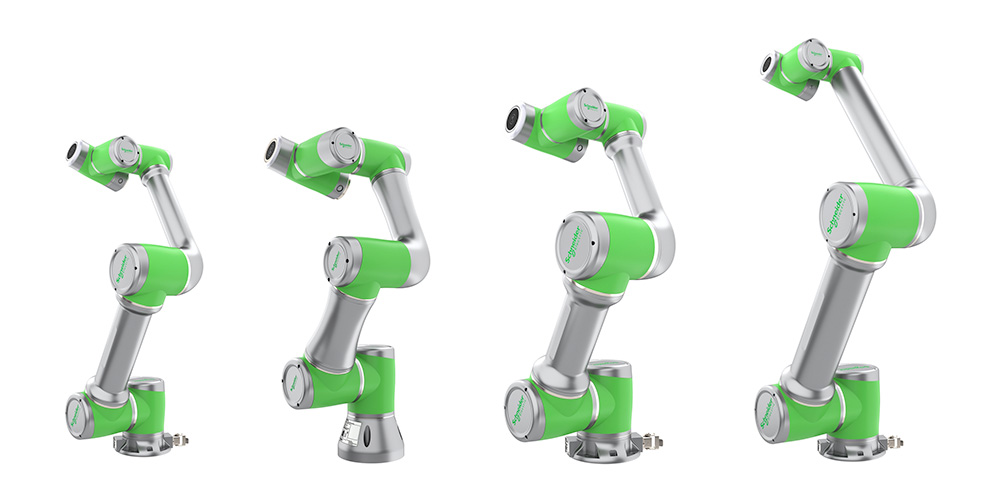|
Listen to this article  |

Schneider Electric Lexium Cobot product line (L to R): RL3, RL5, RL7, RL12. (not to scale) | Credit: Schneider Electric
Schneider Electric announced the release of two new Lexium cobots (collaborative robots) at MODEX 2024, the Lexium Cobot RL 3 and RL 12, as well as the Lexium RL 18 model coming later this year. From single-axis machines to high-performance multi-axis machines, the comprehensive Lexium line enables high-speed motion and control of up to 130 axes from one processor for precise positioning to help solve manufacturer production, flexibility, and sustainability challenges.
The Lexium Cobots feature a positioning accuracy of +/- 0.02 mm (+/- 0.00079″), and the product offers a wide range of payloads from 3kg to 18kg (coming soon). The cobots range in price from $27,368 to $41,170.
Schneider Electric offers digitally engineered automation solutions from concept to operation and maintenance, in addition to robots. EcoStruxure architecture connects smart items, robotics, controls, software, and services to enable collaborative data flow from shop-floor to top-floor machine control. It provides a comprehensive robotic system using Modicon motion controllers, which combine PLC, motion, and robotics control on a single hardware platform with EcoStruxure Machine Expert software.
“As US manufacturing increases, the demand for smart machines is growing and customers are requiring robots with digital twin capabilities that validate machine performance to help them quicky increase production consistently, efficiently, and sustainably,” said Christine Bush, Robotics Center of Excellence Leader, Schneider Electric. “We are partnering with our customers to understand their challenges and pain points, then responding with complete, customized automation solutions – from power products and HMIs to PLCs and robotics – to simplify the process and meet their needs.”
Layout and program in digital twin
The Lexium Cobot product line is compatible with EcoStruxure Machine Expert Twin, a digital twin software suite that creates digital models of real machines, and allows for virtual test strategies and commissioning, as well as shortened factory acceptance testing (FAT). Digitizing these processes can reduce time-to-market by up to 50% and commissioning time by up to 60%. A 20-40% savings in investment costs can also be realized due to faster time-to-market.
Robot assembly, installation, and maintenance are faster with increased computational power, open software, and networking. Automation systems, machines, and robots work together using a centralized architecture and open-standard programming platform.
As the US industrial sector grows quickly, businesses are looking for more modern, efficient, and long-lasting ways to meet the growing demand for their products. To achieve organizational success, it is now necessary to embrace the digitization of Industry 4.0, which includes advances in AI, machine learning, IoT, and digital twins. Software solutions are also essential for helping makers develop new ideas quickly, cut down on working time, and stay competitive in a world that is always changing. As the business world moves toward Industry 5.0, Lexium’s motion and robot solutions will likely change the way things are done and make personalized automated manufacturing possible.
Credit: Source link


Comments are closed.